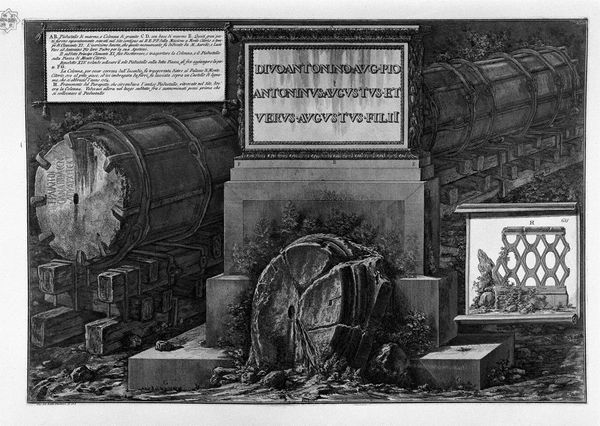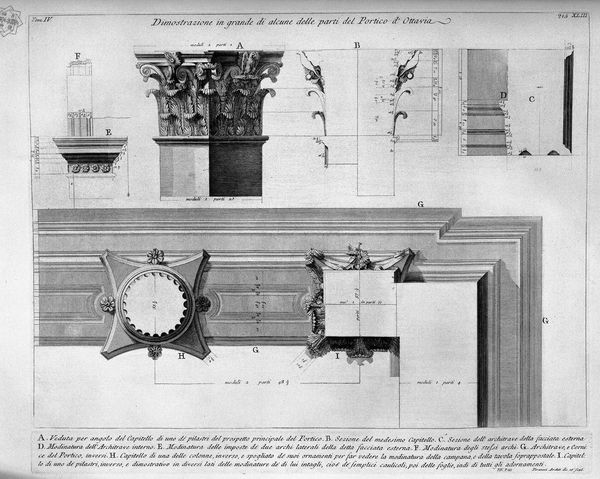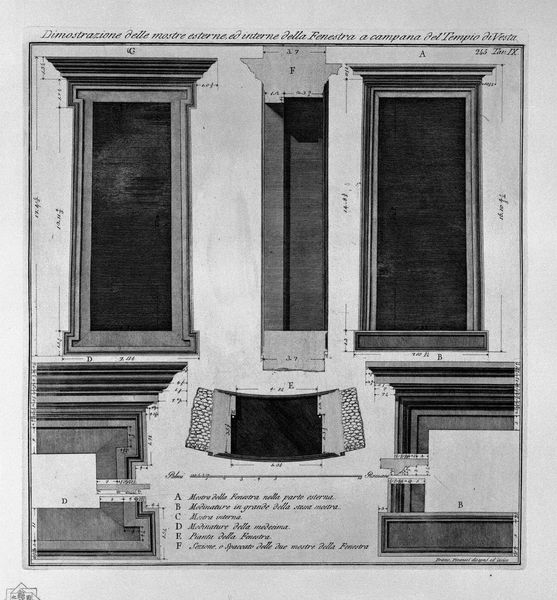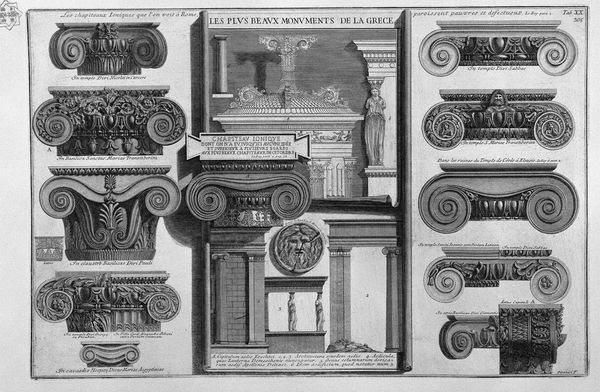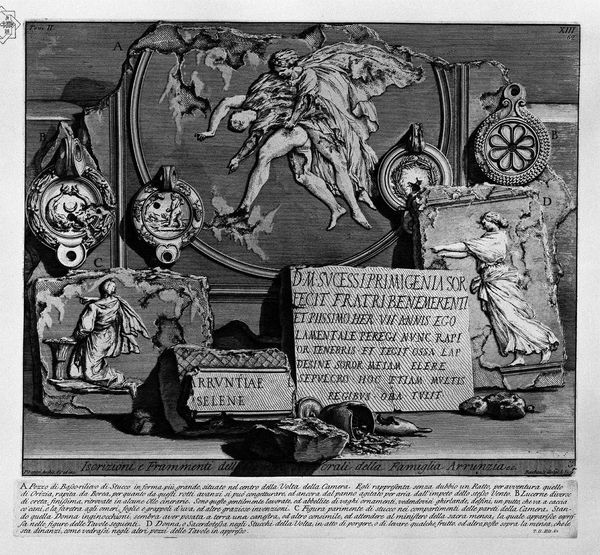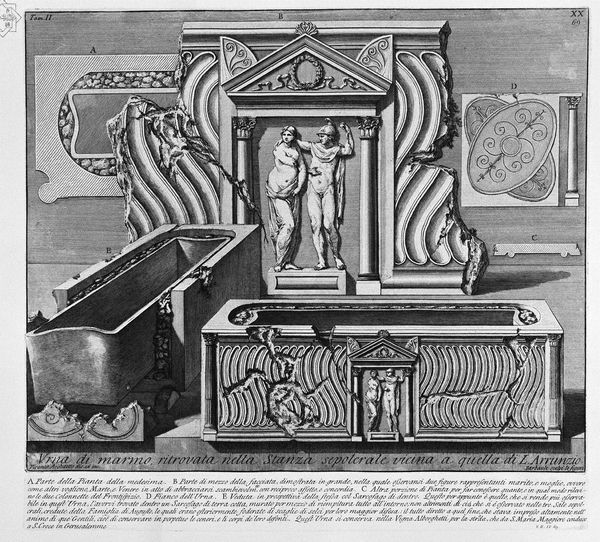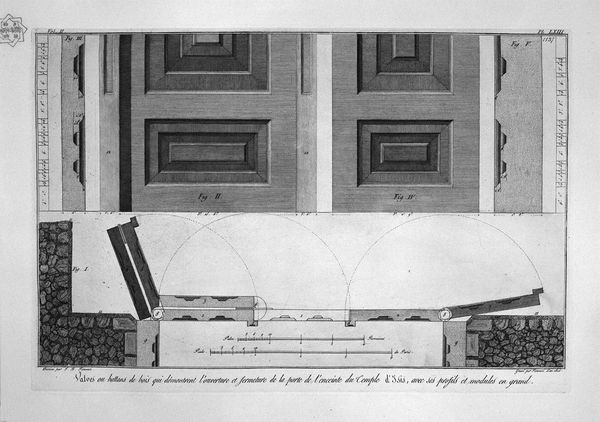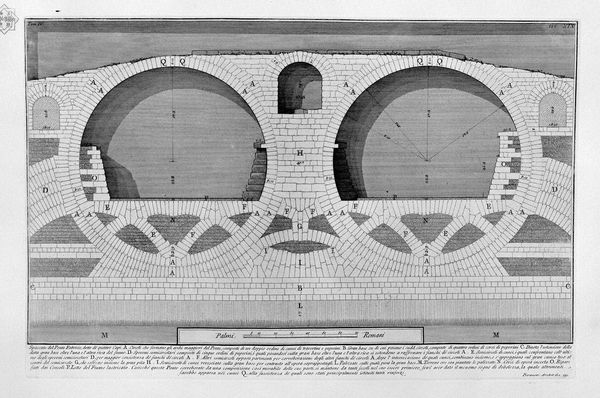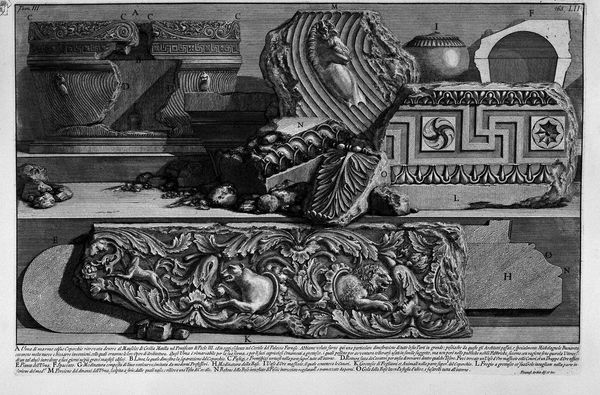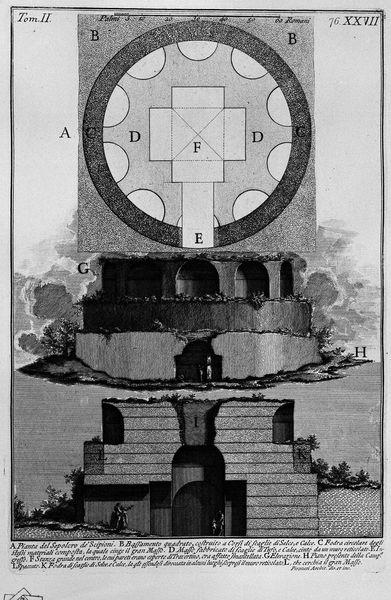
The Roman antiquities, t. 2, Plate LV. Plan and the existing fragments of the burial chamber in the Vineyard Gate S. Casali Sebastiano.
0:00
0:00
drawing, print, photography, engraving
#
drawing
#
neoclacissism
#
collage
# print
#
landscape
#
photography
#
geometric
#
collage layout
#
history-painting
#
engraving
Copyright: Public domain
Here, Giovanni Battista Piranesi depicts a plan of a burial chamber, integrating both architectural drawings and fragments of funerary art. Note the prominent display of an eagle—a symbol deeply embedded in Roman iconography. The eagle, often associated with Jupiter, the king of the gods, signified power, victory, and imperial authority. Its presence here, atop a funerary monument, suggests a desire to invoke these potent associations even in death. Observe how the eagle motif appears across various cultures and epochs, from the Roman standards to heraldic emblems of European aristocracy. Over time, its meaning has evolved, yet it consistently embodies notions of strength, leadership, and divine favor. Consider the psychological comfort that such symbols might offer: a connection to enduring power structures in the face of mortality, a subconscious appeal to cultural memory. The resurgence of this symbol highlights our continuous quest for meaning.
Comments
No comments
Be the first to comment and join the conversation on the ultimate creative platform.

